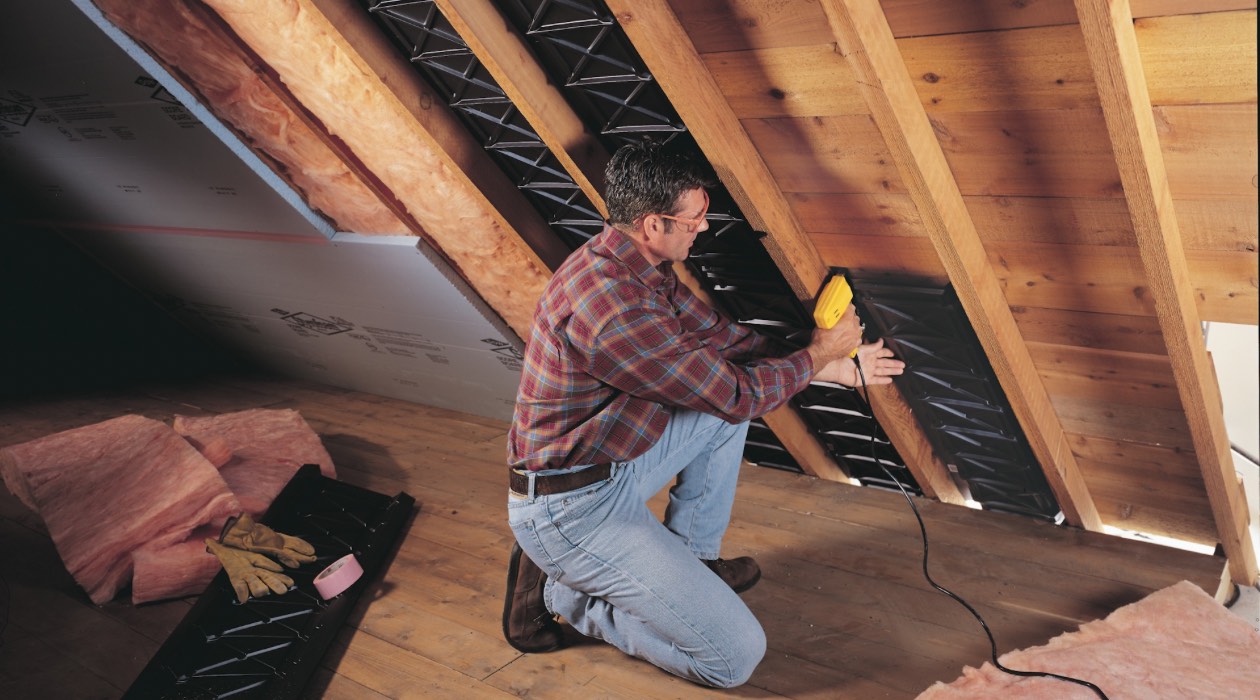

Articles
How To Finish Attic For Storage
Modified: January 6, 2024
Learn how to finish your attic for storage with these helpful articles. Maximize your space and create a functional storage area in your home.
(Many of the links in this article redirect to a specific reviewed product. Your purchase of these products through affiliate links helps to generate commission for Storables.com, at no extra cost. Learn more)
Introduction
Welcome to the world of attic storage! If you find yourself needing extra space in your home, utilizing the attic can be a fantastic solution. With some careful planning and a few necessary steps, you can transform your attic into a functional storage area.
Before you dive into the process, it’s essential to assess your attic space and determine if it’s suitable for storage. Consider factors such as the size, structure, and accessibility of the attic. It’s also important to take into account any safety considerations and building codes that may apply to your area.
In this article, we will guide you through the steps of finishing your attic for storage. From cleaning and preparing the space to organizing and maximizing storage capacity, we will cover all the necessary aspects to ensure a successful attic transformation.
So, let’s get started on creating an organized and efficient storage solution with your existing attic space!
Key Takeaways:
- Transforming your attic into a storage space involves assessing, cleaning, insulating, adding flooring, installing shelving, lighting, securing access, organizing, and prioritizing safety. This process maximizes functionality and creates a secure, well-organized storage area.
- By following the steps outlined in this article, you can unleash the full potential of your attic, creating a practical and valuable storage space that saves time, money, and stress. Enjoy the convenience of additional room in your home!
Read more: How To Insulate A Finished Attic
Assessing the Attic Space
Before you begin transforming your attic into a storage space, it’s crucial to assess the area and determine its suitability for storage. Here are some key factors to consider:
- Size: Measure the dimensions of your attic to determine how much space you have to work with. This will help you plan the layout and decide on the types of items you can store.
- Structure: Assess the structural integrity of the attic, including the walls, floor, and ceiling. Make sure they are sturdy enough to support the weight of stored items. If needed, consult a professional to ensure the attic is structurally sound.
- Accessibility: Consider how easily you can access the attic. Is there a permanent staircase or ladder leading up to it? If not, you may need to install one to make the space more user-friendly.
- Lighting: Take note of the natural lighting in the attic. If it’s dark, you may need to install additional lighting fixtures to ensure visibility when accessing your storage.
- Climate Control: Evaluate the temperature and humidity levels in the attic. Extreme heat, cold, or moisture can damage your stored belongings. Consider insulating and ventilating the space to create a more controlled climate.
By thoroughly assessing the attic space, you can determine its limitations and make any necessary modifications to optimize it for storage purposes. This initial step will ensure a safe and functional storage area.
Cleaning and Preparing the Attic
Once you have assessed the attic and determined its suitability for storage, the next step is to clean and prepare the space. Here’s a step-by-step guide to help you:
- Remove Unwanted Items: Start by decluttering the attic and removing any unnecessary items. This will create a clean slate and make it easier to organize the storage space.
- Clean Thoroughly: Dust and vacuum the attic to remove any dirt and debris. Pay close attention to corners, crevices, and ceilings. If there are stains or marks on the walls or floor, consider painting or refinishing them to freshen up the space.
- Repair Any Damage: Check for any signs of damage, such as leaks, cracks, or pests. If you notice any issues, address them before proceeding with the storage setup. This will help prevent further damage to your stored items.
- Seal Gaps and Cracks: Inspect the attic for any gaps or cracks that could allow pests, dust, or moisture to enter. Use weatherstripping or caulking to seal these openings and create a more secure storage environment.
- Consider Insulation: If your attic lacks proper insulation, consider adding insulation materials. This will help regulate the temperature and protect your stored belongings from extreme heat or cold.
By cleaning and preparing the attic properly, you are setting the foundation for a well-organized and clean storage area. This step is essential for the longevity and safety of your stored items.
Insulation and Ventilation
Insulating and ventilating your attic is crucial for maintaining a controlled climate and protecting your stored items. Here are some key considerations for insulation and ventilation:
- Insulation: Proper insulation helps regulate the temperature in your attic and prevents heat loss or gain. Insulation materials such as fiberglass batts, blown-in cellulose, or spray foam can be used to insulate the attic’s walls, floors, and ceilings. Follow local building codes and consult a professional if you’re unsure about the best insulation option for your specific needs.
- Vapor Barrier: Consider installing a vapor barrier along with insulation. This barrier helps prevent moisture from seeping into the attic, reducing the risk of mold and mildew growth. It’s essential to install the vapor barrier on the warm side of the insulation to avoid condensation.
- Ventilation: Adequate ventilation is necessary to maintain airflow and prevent moisture buildup in the attic. Good ventilation helps regulate temperature, reduces the risk of roof damage, and prolongs the lifespan of your stored items. Install soffit vents, ridge vents, or gable vents to allow for proper air circulation.
- Consider Attic Fans: Attic fans can enhance ventilation by expelling hot air and drawing in fresh air from outside. These fans can help maintain a more consistent temperature in the attic and prevent heat buildup during the summer months.
Proper insulation and ventilation go hand in hand to create a well-balanced attic environment. By insulating and ventilating your attic, you protect your stored items from extreme temperatures and moisture, ensuring their longevity and preserving their quality.
Adding Flooring
Once you have cleaned, prepared, and insulated your attic, the next step is to add appropriate flooring. Installing a solid and stable flooring surface is essential for easy access and protection of your stored items. Here’s how to add flooring to your attic:
- Evaluate Existing Floor: Assess the condition of the existing attic floor. If it is sturdy and in good shape, you may be able to use it as a base for your storage area. However, if the existing floor is uneven, damaged, or insufficient, you may need to consider adding a new flooring layer.
- Choose Flooring Material: Select a flooring material that is suitable for the attic environment. Common options include plywood, oriented strand board (OSB), or attic flooring panels specifically designed for storage areas. These materials are durable and provide a stable surface for walking on and storing your belongings.
- Measure and Cut: Measure the dimensions of your attic and cut the flooring material accordingly. Ensure a precise fit by accounting for any obstructions, such as vents or support beams, during the cutting process.
- Install Flooring: Lay the flooring material down, starting from one end of the attic and working your way towards the access point. Use screws or nails to secure the flooring panels to the attic floor or support beams. Ensure that the panels are properly aligned and tightly fitted together.
- Seal the Edges: To prevent dust, dirt, and moisture from seeping through the gaps around the edges of the flooring, use caulk or weatherstripping to seal them. This will create a more secure and cleaner storage environment.
Adding flooring to your attic provides a stable surface for walking, accessing storage items, and prevents damage to your attic’s structure. Take care to choose a suitable flooring material and ensure a proper installation to maximize the functionality and durability of your attic storage area.
Read more: How Much Does It Cost To Finish An Attic
Installing Shelving or Storage Units
Now that you have a solid flooring in place, it’s time to focus on installing shelving or storage units to maximize the use of your attic space. Proper organization is key to creating an efficient storage area. Here are some steps to consider:
- Plan Your Storage Layout: Assess the items you plan to store in the attic and evaluate their size, weight, and accessibility requirements. This will help you determine the type and size of shelves or storage units needed.
- Select the Right Storage Solutions: Choose storage options that suit your needs, such as freestanding shelves, wall-mounted shelves, or adjustable modular units. Consider using sturdy storage containers, bins, or labeled boxes to keep smaller items organized.
- Install Shelves or Units: Follow the manufacturer’s instructions to properly install the shelves or storage units. Ensure that they are securely attached to the walls or floor and can support the weight of your items.
- Organize Your Items: Group similar items together and organize them in a logical manner on the shelves or storage units. Label the containers or boxes for easy identification when retrieving items in the future.
- Leave Space for Walkways: Allow for adequate space between shelves or units to create pathways for easy access. This will prevent overcrowding and ensure you can reach all your stored items without any difficulties.
Installing shelving or storage units in your attic will help you make the most of your storage space. By organizing your items and utilizing appropriate storage solutions, you can keep everything easily accessible and maintain a clutter-free attic.
Make sure to properly insulate and ventilate the attic space to protect stored items from extreme temperatures and moisture. Use sturdy flooring to create a safe and stable storage area.
Lighting the Attic Space
Proper lighting is essential for creating a functional and user-friendly attic storage space. Without adequate lighting, it can be challenging to navigate and find items in your attic. Here are some tips for effectively lighting your attic:
- Evaluate Natural Lighting: Assess the amount of natural light that enters your attic. If there are windows or skylights, utilize them to maximize the natural light source. Clear any obstructions that may block the light, such as overgrown trees or debris.
- Install Artificial Lighting: If natural lighting is insufficient, install artificial lighting fixtures to ensure proper illumination. Consider the size of your attic and the type of lighting that suits your needs. Options include recessed lights, track lighting, pendant lights, or LED strips.
- Position Lighting Strategically: Place lighting fixtures strategically to eliminate dark spots and provide uniform lighting throughout the attic. Consider areas where you need the most light, such as walkways and storage units, and position fixtures accordingly.
- Consider Motion Sensor Lights: To save energy and make accessing your storage more convenient, consider installing motion sensor lights. These lights will automatically turn on when you enter the attic and turn off when there is no motion, reducing energy consumption.
- Ensure Safety: When installing lighting fixtures, it’s important to prioritize safety. Make sure all electrical wiring is properly installed and secure. If you’re unsure about electrical work, consult a professional to ensure a safe installation.
By providing adequate lighting in your attic, you create a more accessible and user-friendly storage area. Whether utilizing natural light or installing artificial light fixtures, ensuring proper illumination will make it easier to navigate and locate stored items.
Securing the Access Point
Securing the access point to your attic is crucial for the safety and security of your storage area. By properly securing the entrance, you can prevent unauthorized access and protect your stored items. Here are some steps to consider:
- Lock or Latch: Install a lock or latch on the attic access door or hatch to secure it. This will prevent anyone from opening it without your permission. Choose a lock or latch that is sturdy and tamper-proof.
- Use a Code or Key: Consider using a keypad lock or a lock that requires a key or code to gain access. This adds an extra layer of security and ensures that only authorized individuals can enter the attic.
- Alarm System: Install an alarm system near the access point to detect any unauthorized entry. This can be a simple motion sensor or a more advanced security system linked to your home’s security network.
- Keep Keys Secure: If you are using a key to access the attic, make sure you keep it in a safe place and only provide copies to trusted individuals. Avoid leaving spare keys in obvious spots or easily accessible areas.
- Consider Surveillance: Installing a surveillance camera near the access point can act as a deterrent and provide additional security. Choose a camera with motion detection and remote access capabilities for optimal monitoring.
- Regular Inspection: Periodically check the access point for any signs of tampering or damage. Repair or replace any compromised locks or latches to maintain a secure attic storage area.
By securing the access point to your attic, you can have peace of mind knowing that your stored items are protected. Taking these precautionary measures will discourage unauthorized access and help maintain the integrity of your attic storage space.
Organizing and Maximizing Storage Space
Proper organization is the key to maximizing the storage space in your attic. By using effective storage techniques and utilizing the available space efficiently, you can create a well-organized and functional storage area. Here are some tips to help you organize and maximize your attic storage space:
- Categorize and Label: Sort your items into categories and label storage containers or boxes accordingly. This will make it easier to locate specific items when needed.
- Utilize Vertical Space: Take advantage of vertical space by installing shelves or using tall storage units. This allows you to store items efficiently and frees up valuable floor space.
- Maximize Empty Spaces: Identify any unused or empty spaces in your attic, such as corners or under eaves. Consider utilizing these areas by installing specialized storage solutions, such as hanging racks or built-in shelving.
- Utilize Clear Containers: Store items in clear plastic containers or bins to easily see what’s inside without having to open each container. This saves time and allows for better organization.
- Arrange Based on Frequency of Use: Place frequently used items in easily accessible areas, while storing infrequently used items towards the back or higher shelves. This makes it more convenient to retrieve frequently needed items.
- Keep a Pathway: Maintain a clear pathway within your attic to allow for easy access to different areas. Avoid blocking access to storage units or shelves with larger or bulkier items.
- Consider Hanging Storage: Utilize hanging storage solutions, such as hooks or hanging racks, for items like bicycles, sports equipment, or holiday decorations. This frees up floor space and keeps these items organized and easily accessible.
- Regularly Re-evaluate and Declutter: Periodically go through your attic storage to assess if any items can be donated, sold, or discarded. This helps prevent unnecessary clutter and frees up space for new items.
By organizing and maximizing the storage space in your attic, you can make the most of the available area and create a functional and efficient storage solution. Keep these tips in mind to ensure a well-organized and clutter-free attic storage space.
Safety Considerations
When transforming your attic into a storage space, it’s important to prioritize safety to ensure a secure environment for both yourself and your stored items. Here are some essential safety considerations to keep in mind:
- Weight Limit: Be mindful of the weight capacity of your attic floor and the shelving units you install. Avoid overloading them with heavy items that could potentially cause structural damage.
- Proper Flooring: Ensure that the attic floor is stable and in good condition. Repair any damage or instability to prevent accidents while accessing the storage space.
- Safe Access: Install a stable staircase, ladder, or pull-down stairs that provide safe and easy access to the attic. Make sure the access point is sturdy and securely attached.
- Fire Safety: Keep in mind fire safety measures when storing items in the attic. Avoid storing flammable materials and ensure that there is a clear path for escape in case of a fire.
- Electrical Considerations: If you’re planning to install lighting or other electrical fixtures, consult a professional to ensure proper wiring and adherence to electrical codes. Avoid overloading electrical circuits and use surge protectors if needed.
- Secure Storage: Use secure storage containers or shelving to prevent items from falling or causing accidents. Secure any sharp or hazardous items and keep them out of reach of children or pets.
- Ventilation: Maintain proper ventilation in the attic to prevent the buildup of excess moisture or mold. Poor ventilation can lead to deterioration of stored items and pose health risks.
- Regular Maintenance: Regularly inspect the attic for any signs of damage, pests, or potential hazards. Address any issues promptly to maintain a safe storage environment.
- Emergency Preparedness: Have a plan in place for emergencies, such as a clear exit strategy, working smoke detectors, and a fire extinguisher easily accessible in case of a fire.
Prioritizing safety ensures the well-being of both yourself and your stored items in the attic. By following these safety considerations, you can create a secure and functional storage space that brings peace of mind.
Conclusion
Transforming your attic into a storage space is a practical and effective solution for creating additional room in your home. By following the steps outlined in this article, you can successfully finish your attic for storage and maximize its functionality.
Assessing the attic space, cleaning and preparing it, insulating and ventilating, adding flooring, installing shelving or storage units, lighting the area, securing the access point, organizing the items, and considering safety measures are essential steps in the attic transformation process.
Remember to utilize the available space efficiently, categorize and label your items, and regularly declutter to maintain an organized storage area. By making safety a priority, you can ensure a secure and hazard-free environment for yourself and your belongings.
Whether it’s creating extra storage for seasonal items, keepsakes, or everyday essentials, a well-organized attic storage space can save you time, money, and stress by providing a designated spot for your belongings.
So, unleash the full potential of your attic and embark on a journey to turn it into a functional and valuable storage area. Enjoy the additional space and the convenience it brings to your home!
Frequently Asked Questions about How To Finish Attic For Storage
Was this page helpful?
At Storables.com, we guarantee accurate and reliable information. Our content, validated by Expert Board Contributors, is crafted following stringent Editorial Policies. We're committed to providing you with well-researched, expert-backed insights for all your informational needs.
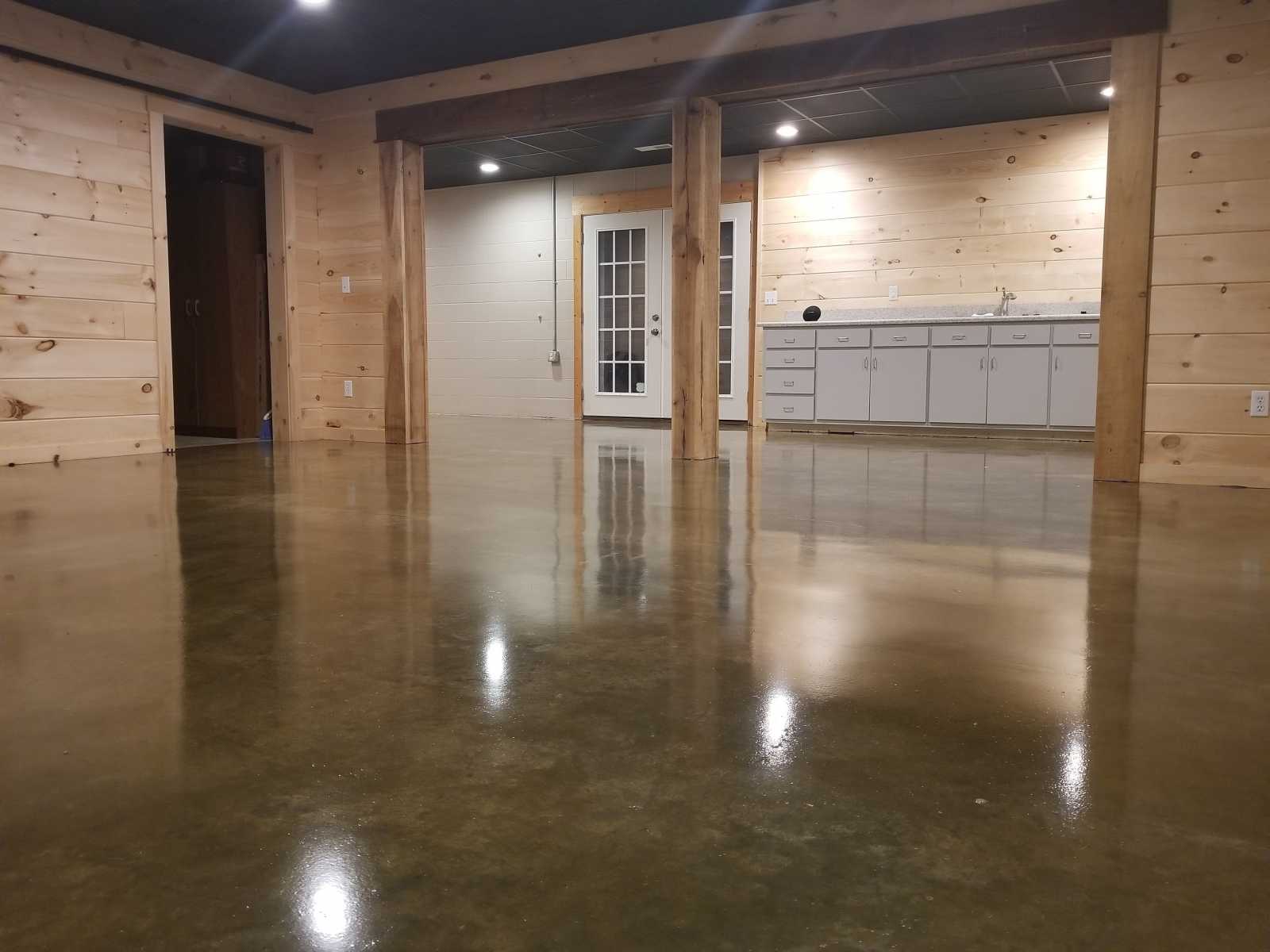

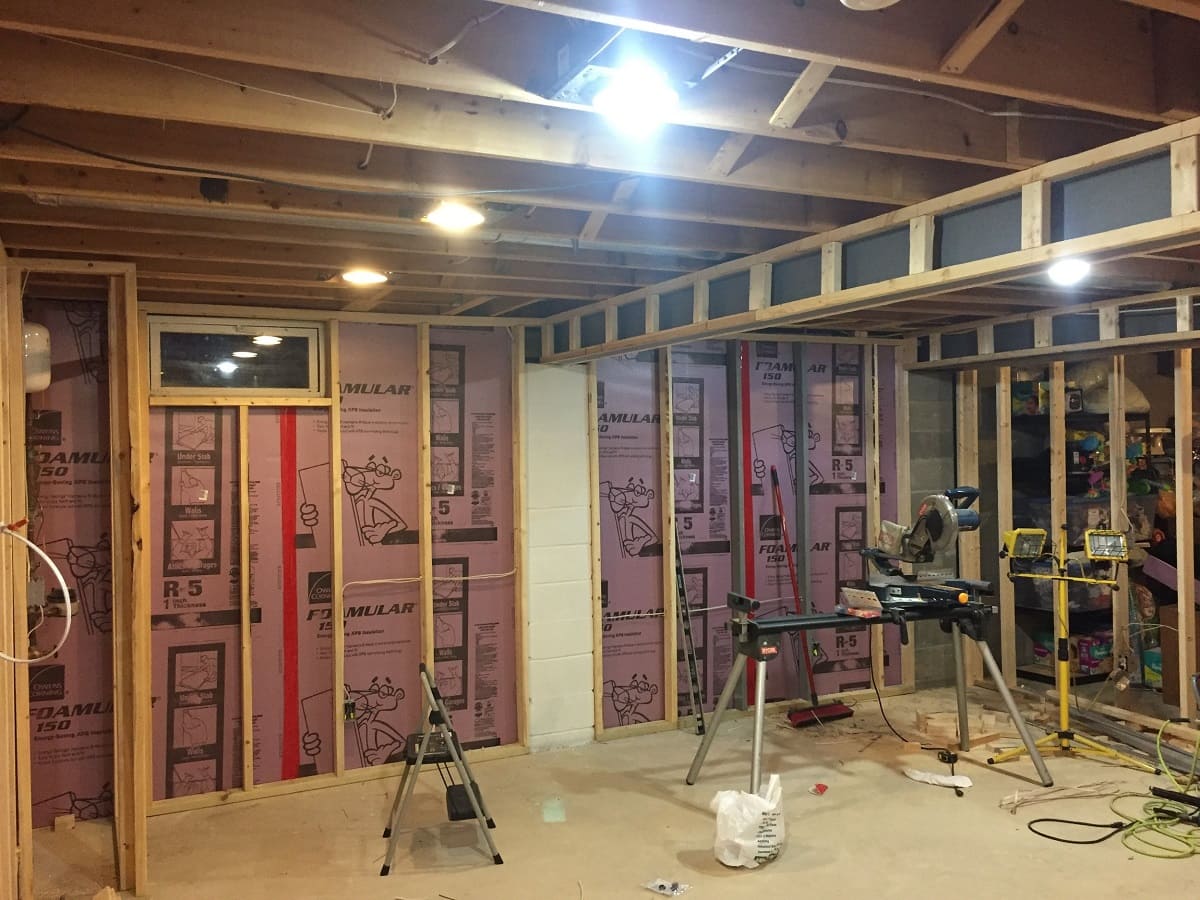

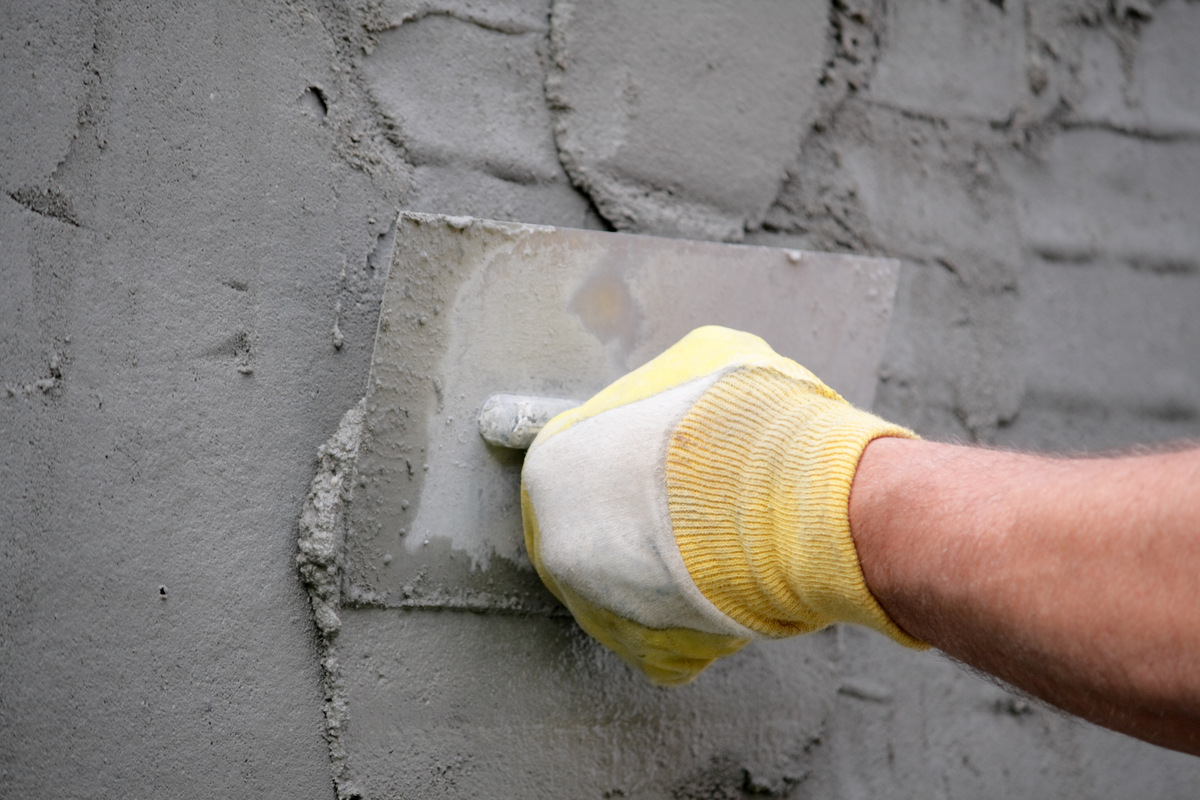
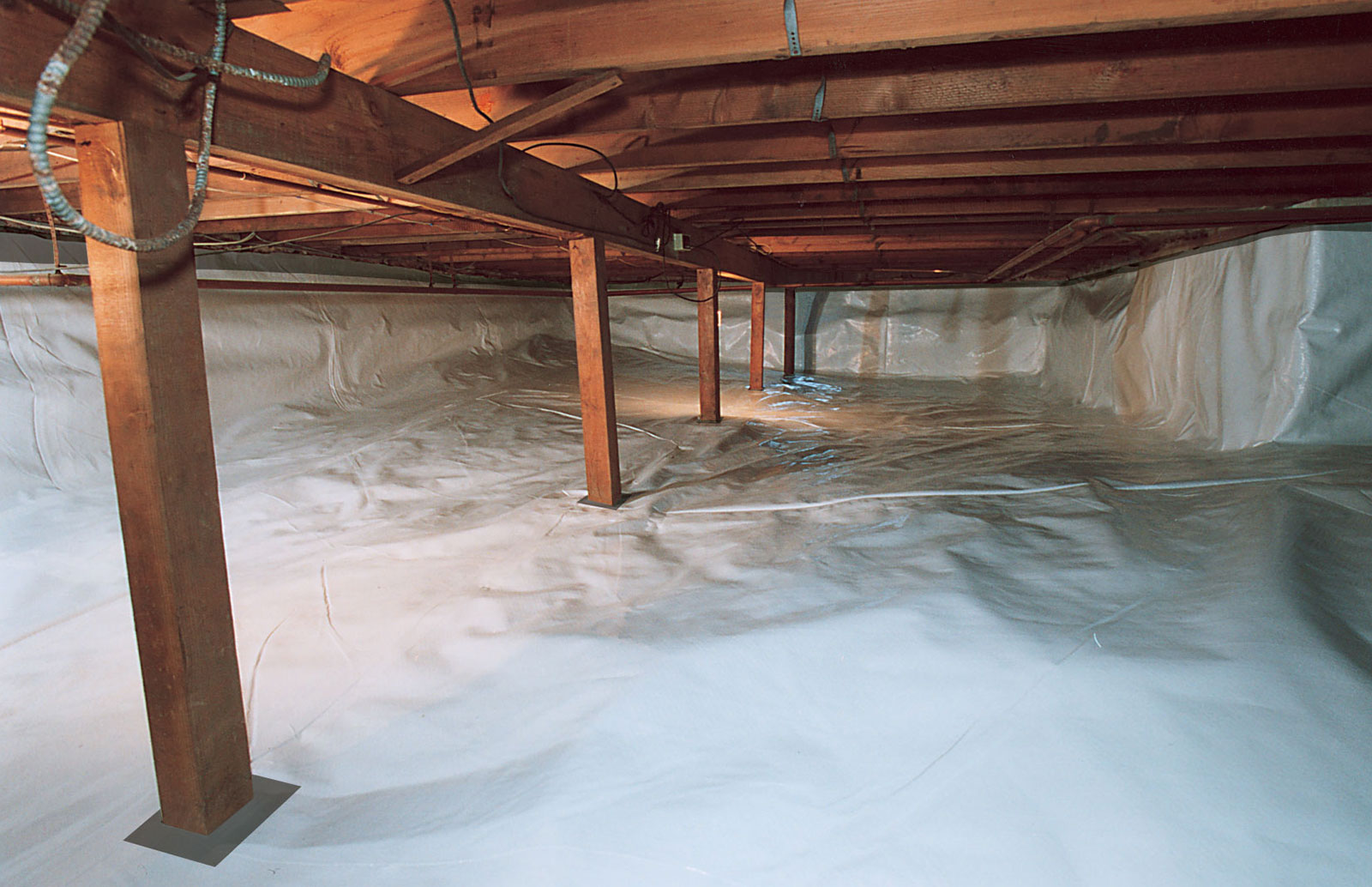

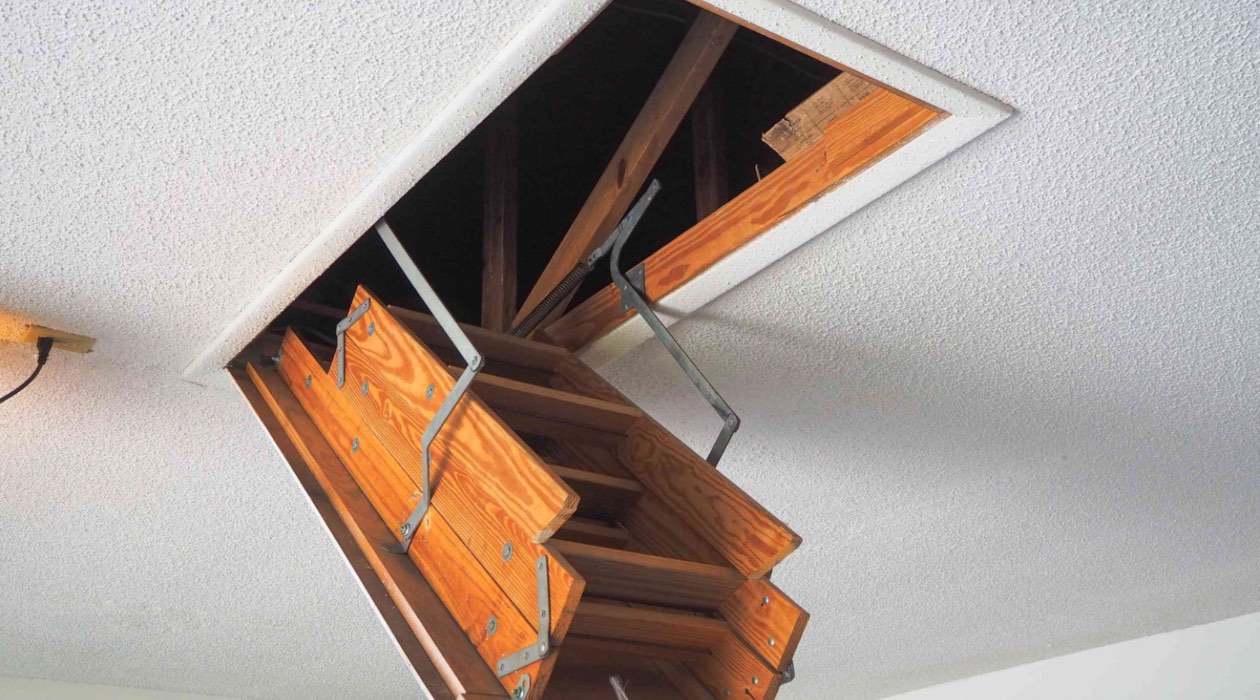
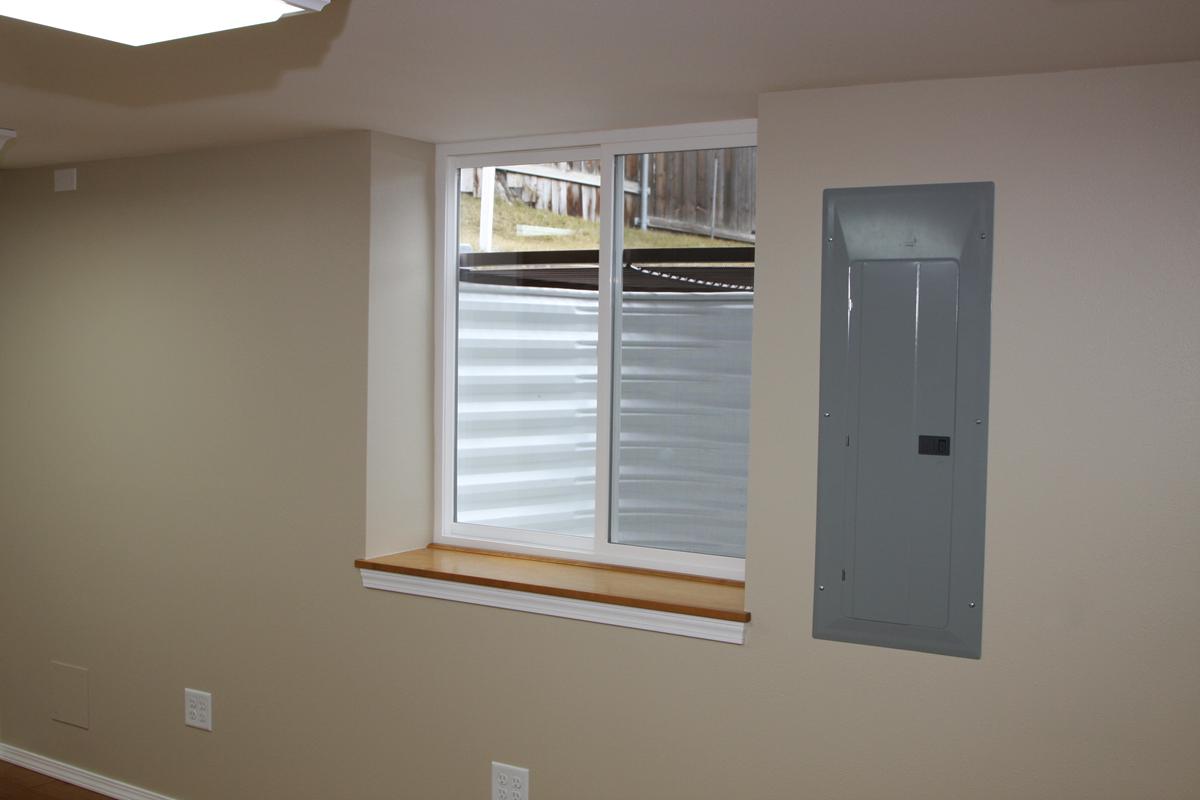
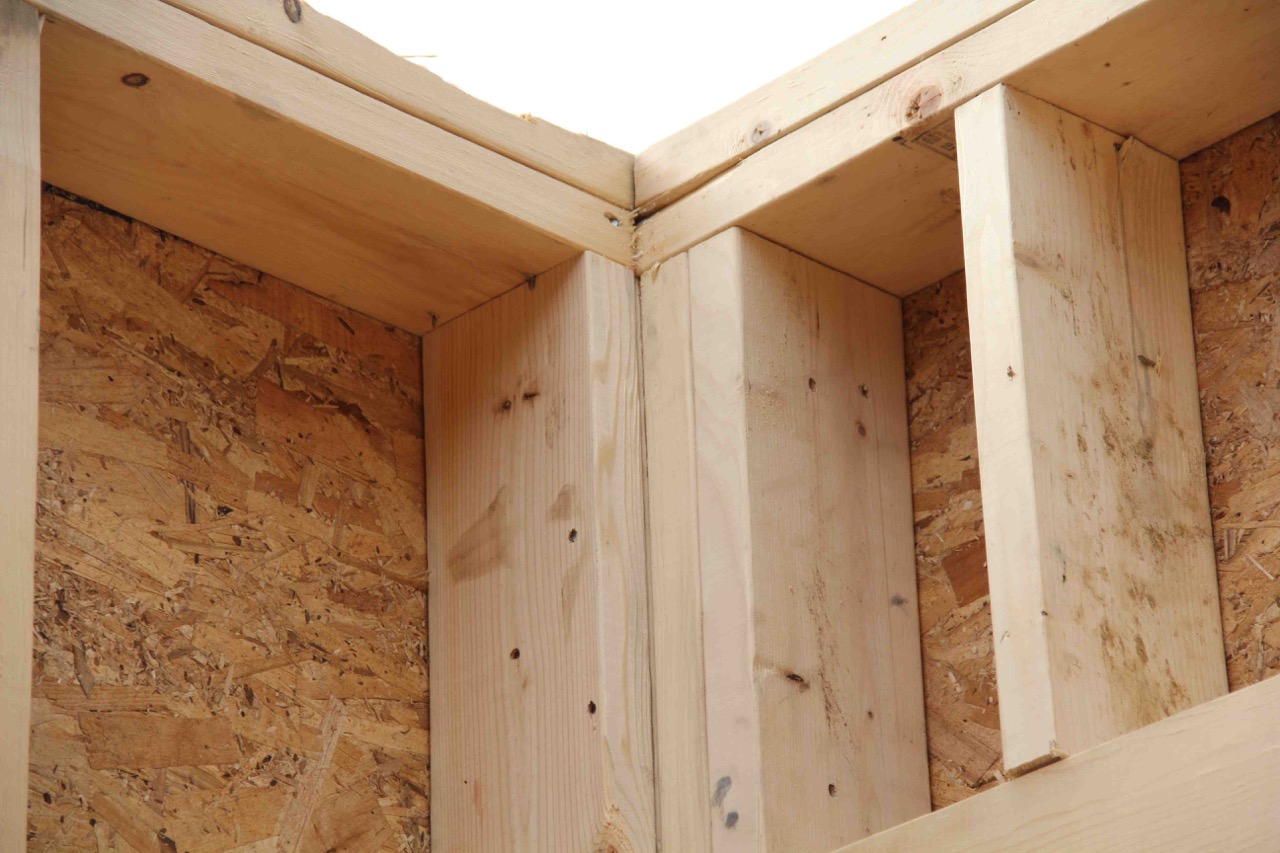


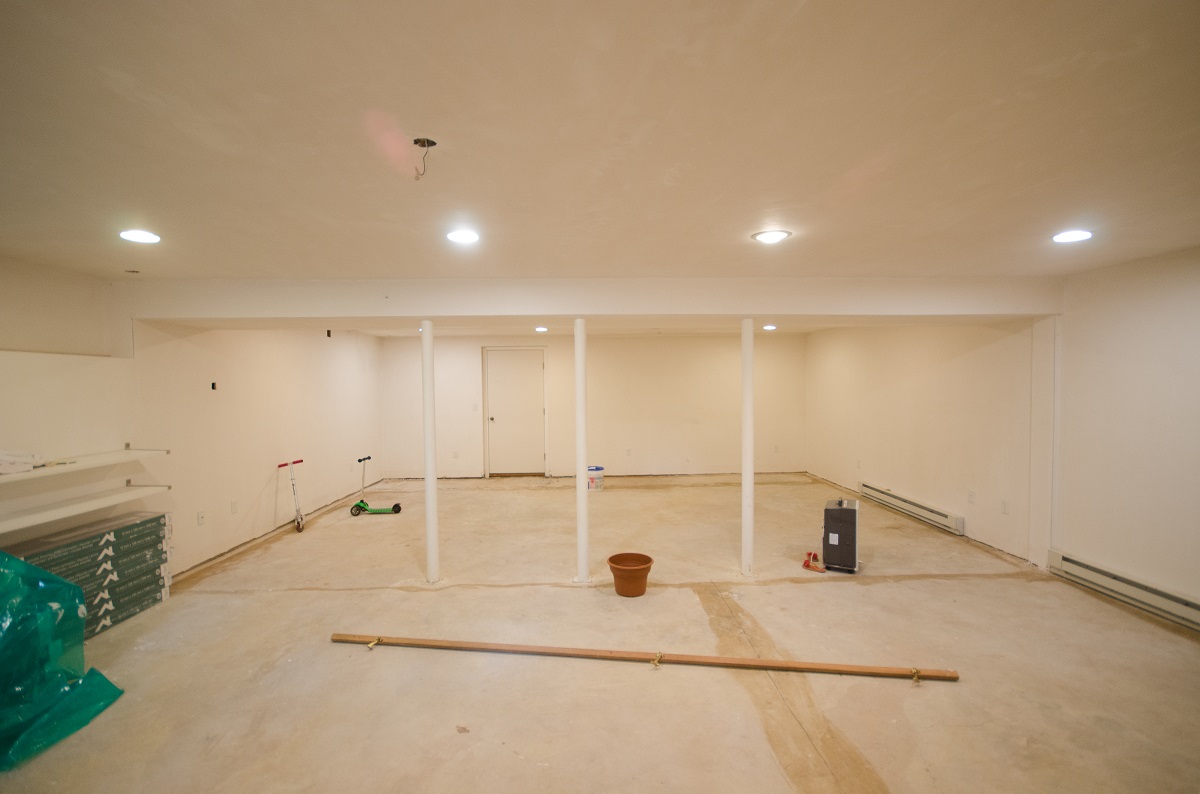

0 thoughts on “How To Finish Attic For Storage”